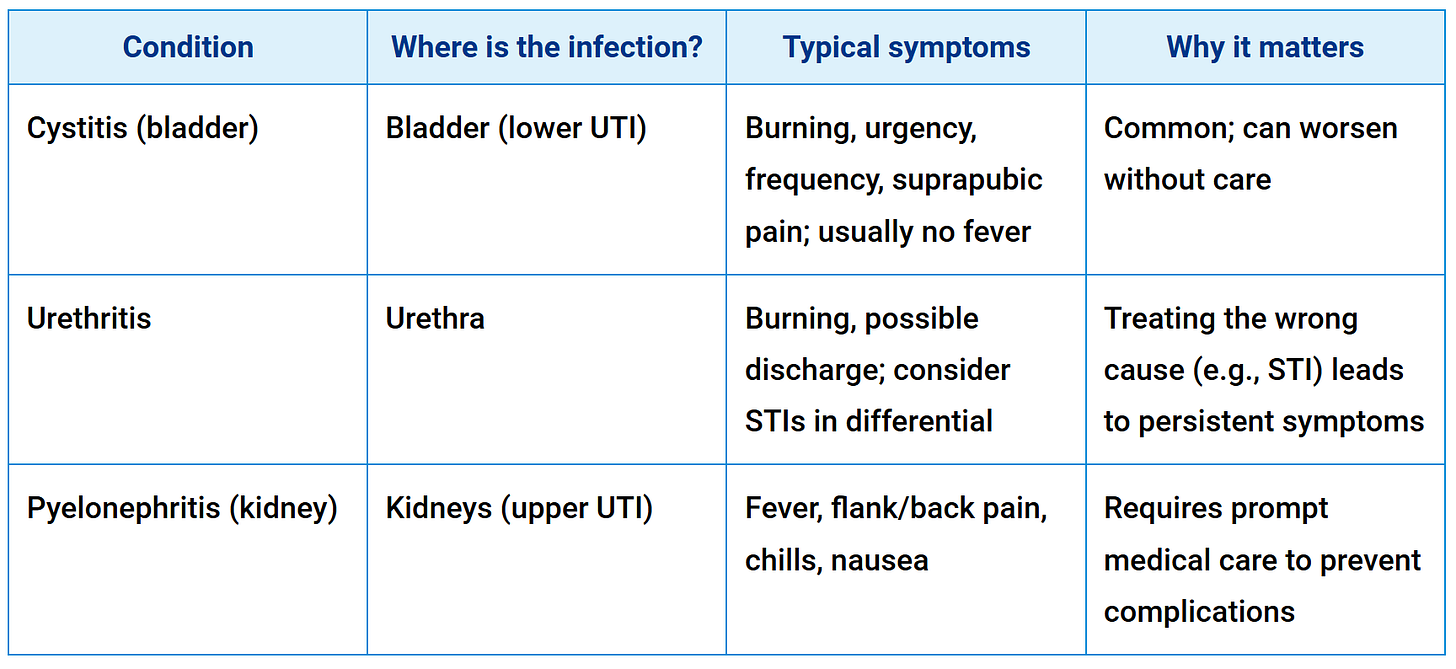Cystitis vs. UTI — Understanding the Differences
Description
STORY AT-A-GLANCE
One in three Europeans cannot correctly define cystitis as a bladder infection, with younger adults showing particularly poor awareness of these common conditions
While UTIs can occur anywhere in the urinary tract, cystitis affects only the bladder; pyelonephritis involves kidneys and requires urgent care
Studies show up to 85% of UTI diagnoses may be incorrect, often confusing harmless bacterial colonization with actual infection requiring treatment
Mild uncomplicated cases often resolve with hydration and symptom management; overuse of antibiotics drives dangerous resistance and should be avoided when possible
Reducing factory-farmed meat, practicing proper hygiene, using methylene blue or cranberry products, and getting sunlight exposure can help prevent recurrent infections

The level of urinary tract infections (UTIs) awareness is far less than what one might expect given how common these conditions are. In a recent international survey published by the European Association of Urology, one in three Europeans could not correctly define cystitis as a bladder infection, with many confusing it for entirely unrelated problems such as skin conditions or allergies.1 2
The knowledge gaps are especially striking among younger adults. Fewer than half of people aged 18 to 24 recognized cystitis for what it is, suggesting that basic education on urological health has failed to reach some of the most vulnerable groups.
The same survey showed that only about half of respondents were aware that women are disproportionately affected by UTIs, despite medical evidence that 50% to 60% of women will experience at least one UTI during their lifetime. Almost one in five men, in fact, incorrectly assumed that males were more likely to be affected.
Misconceptions between terminologies will inevitably contribute to misdiagnosis. In fact, it’s already happening, and these inaccuracies can contribute to delayed treatment and worsening outcomes.
What’s the Difference Between Cystitis and a UTI?
Cystitis is a specific type of urinary tract infection that affects the bladder, but the broader term “UTI” refers to infections that can occur anywhere along the urinary tract, including the urethra, bladder, ureters, and kidneys.
When the infection is confined to the lower urinary tract, it usually manifests as urethritis or cystitis. If it spreads upward, it can involve the kidneys in a condition known as pyelonephritis, which is often more serious and can be life-threatening.3 4
The most common cause of both cystitis and other UTIs — Uropathogenic Escherichia coli (UPEC) is the root cause, which accounts for the majority of infections in otherwise healthy individuals. Other bacteria such as Klebsiella pneumoniae, Proteus mirabilis, Enterococcus faecalis, and Staphylococcus saprophyticus are also important culprits, particularly in certain populations.
UTIs are further divided into uncomplicated and complicated types — Uncomplicated infections usually occur in otherwise healthy individuals without structural abnormalities of the urinary tract, whereas complicated UTIs are linked to conditions such as catheter use, urinary tract obstruction, or pregnancy.
Another source of confusion in diagnosis is interstitial cystitis — Unlike bacterial cystitis, this is a chronic inflammatory condition of the bladder wall with no detectable pathogens. Patients may experience pain, urgency, and frequency similar to cystitis, but cultures are negative. This distinction is vital because mislabeling interstitial cystitis as a recurrent infection can lead to unnecessary antibiotic exposure without relief of symptoms.
The table below provides a quick overview of the differences between each condition:
What Symptoms Should You Watch for in Women, Men, and Older Adults?
The presentation of UTIs varies across different groups. In women, the classic signs are well-known — a burning feeling during urination, an urgent and frequent need to urinate, and sometimes lower abdominal pain or discomfort. Men experience many of the same symptoms, but because UTIs are less common in males, the presence of infection often suggests a more complicated scenario, such as prostate involvement.5
Older adults are especially challenging to diagnose accurately — While clinicians and caregivers often attribute confusion or sudden changes in mental status to UTIs, research cautions against reflexively treating every case of bacteriuria in older people as infection.
<label class="hide-text" contenteditable="false">Text within this block will maintain its original spacing when published</label>Asymptomatic bacte







